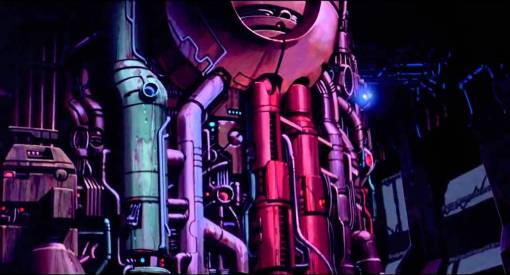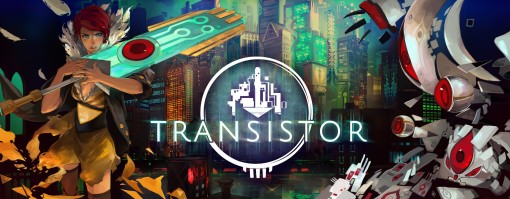At.
I joined Twitter in 2010.
I had been unemployed for almost a year since graduation and was eating through the endless time on my hands by looking for work, writing, and reading.
The year before, I developed a larger appreciation for Japanese culture.
For Japanese history, art, literature: Expanding beyond the world of games and anime.
In 2009, Jake Adelstein released his memoir: Tokyo Vice.
It told the story of Jake’s life in Japan as an investigative journalist and the only American to be admitted to the Tokyo Metropolitan Police Press Club.
Having turned down the opportunity to work in Japan, I was able to experience Tokyo through his work.
After finishing Tokyo Vice, I spent days finding a way to get in touch with Jake.
Due to the sensitive nature of his work, he had made himself difficult to find.
Scouring the internet was fruitless, so I settled on the only public face he had: Twitter.
I explicitly joined Twitter to tell him how much I enjoyed his book.
I was absorbed by it.
After a few exchanges with Jake, I had no idea what to do with this network.
When I moved to Rochester, I stopped writing.
When I started working, social networks didn’t mean much to me.
Through SRK, I found the Rochester FGC and because of that, after a three year absence, I was pulled back into maintaining an internet presence.
I reopened Twitter in 2013 and saw how much it had changed.
The sheer amount of content Twitter was producing, the amount of access it was allowing.
I understood it better now.
I had been listening to the Insert Credit Podcast since its inception, having been a follower of the original site.
I always felt Tim Rogers understood games and language on an intrinsic level.
I always felt he understood what was necessary to express and understand.
After hearing him plug his Twitter account on numerous podcast episodes, I went on to find him.
I thanked him for his excellent writing. He thanked me back.
I was still buying games from Gamestop and stopped by one day to purchase Muramasa Rebirth.
A child was digging through the used game bin and found a knockoff, CoD-style, console FPS.
As I handed the money to the cashier, I overhear the child pleading with his father:
“I want to get this game because I want to be in the army when I grow up!”
I laughed. I remember dropping lines like that to convince my parents of whatever games caught my eye.
At home, I related the story to Tim.
He wrote back: I could have just downloaded Kokuga for the 3DS and I would never have had to leave my house.
I looked up Kokuga.
I couldn’t believe I had never heard of this game.
Seal.
Kokuga had been released for a year by the time I downloaded it.
As I have often stated: I have a deep, profound love of STGs and have always prided myself on knowing of the ones that mattered.
I couldn’t believe how I had lapsed here.
Kokuga was not only made by G.rev, one of the world’s last remaining and most storied STG houses responsible for the likes of Under Defeat, Ikaruga, and Border Down, but was also directed by Hiroshi Iuchi: Director of Radiant Silvergun, Gradius V, and Ikaruga.
What makes G.Rev’s STGs different from Cave‘s is that they all rely on a combination of fringe mechanics that push the conceptual identity of the genre.
Cave is a company driven by pure arcade action, overflowing with style.
G.rev is a laboratory.
Ikaruga has color-switching. Radiant Silvergun has seven weapons. Border Down’s levels change depending on where you are shot down.
And Kokuga isn’t any different.
Kokuga is not afraid of experimentation and may be the purest form of G.rev’s vision to date.
The game takes place in an era of war between two nations and the player is tasked with piloting country A’s most advanced weapon: Kokuga, a tank of the future.
This is a game made at the cross-section of freedom and gambling.
The player is left to choose where to begin the game.
Levels are all labeled alphabetically and the general trend is that as levels progress upwards, the more difficult they are.
Unlike many of its famous ancestors, Kokuga is a multi-directional, non-scrolling shooter.
It maintains the verticality of other shooters, but allows the player more maneuverability.
The levels are very tightly designed. Nearly claustrophobic.
Levels are littered with obstacles and embedded/mobile enemy types.
To succeed in Kokuga, the player must be aware of the spaces around them, more so than in nearly any other shooter I’ve seen.
Kokuga isn’t just about dodging bullets, it’s about tactical positioning and resource management.
It’s a roguelike disguised as an action game.
The game takes place on the top screen, while the bottom screen is utilized for selecting powerups.
There are four powerups, assigned at random, sitting on the bottom screen.
Any one of them may be selected at any time to bolster either the tank’s defensive or offensive ability.
Each powerup is limited in both duration and frequency. Once you use a powerup, another one is assigned to the slot at random until they run out.
Burn through powerups too quickly and the boss fights become overwhelming. Burn through them too slow and the player is bogged down by the enemy.
This is a game that actually holds the player accountable for the decisions they make.
This is a game that does a fantastic job at giving the player a simulation of the responsibility that comes with power.
The player is free to decide where they would like to enter the world and after making the choice, they are thrown into closed, tight spaces and forced to fight through swarms with very limited resources.
This transition is seamless.
In a traditional STG, the player is only ever allowed to make micro-tactical decisions that mainly involve movement.
The urgency in classic STGs is filtered through the forced scrolling levels.
Even in newer STGs, urgency is manufactured through inverted mechanics: Sine Mora uses time/time-manipulation. Luftrausers uses a simulation of gravity.
While there is tactical urgency in Kokuga, the focus is more on the broader, more strategic plane.
It is a type of urgency which burns slowly at first and accelerates as the level becomes increasingly difficult.
This is further reinforced by the smooth, calm movement of the tank itself. Nothing feels rushed.
Kokuga’s greatest strength is that it does not rely on only one mechanic.
Even though by releasing it on the 3DS eShop, one may get the impression that this isn’t an important game, it is by far the purest manifestation of G.rev.
One of G.rev’s weaknesses has always been their over-reliance on one main mechanic around which others revolve.
One of the problems with Ikaruga was that after awhile it’s color-switching became so overused that it quickly lost its novelty.
With Kokuga, G.rev have been able to multithread their innovative style, creating a game full of interesting mechanics that fit together in a near-perfect way.
Kokuga’s systems not only maximize the game’s obvious strengths, but give the player a more dynamic experience by broadening their access to choice while throwing in a randomness element (powerups) within already tight margins.
Kokuga is a deep meditation on elegant, immersive, mobile game design.
It’s frightening this game almost passed by me unnoticed.
It’s frightening that it has flown under the radar of so many others.
Kokuga is everything G.rev have worked toward: A pure distillation of their innovative style.
With it’s somber tone, wonderful styling, and mechanical coherency: It is the true evolution of Ikaruga.
A true evolution of G.rev’s experimental precision.





